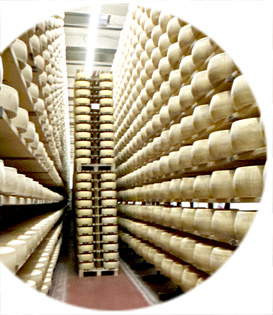« Back
Refrigerant expansion in air-conditioning and refrigeration: why an electronic expansion valve?
29/11/2005
Refrigerant expansion in air-conditioning and refrigeration: why an electronic expansion valve?
All refrigeration units, whether developed for the air-conditioning or refrigeration market, commonly use a traditional thermostatic expansion valve as the expansion device: this is the standard component fitted with a sensor bulb and, in more advanced models, a pressure fitting for external compensation.
This expansion device, hereinafter called the TEV (Thermostatic Expansion Valve), despite being functional and generally able to make the unit it is installed in "operational", has a number of characteristics that in many aspects limit the versatility of the installation and the performance that can be achieved.
Obviously, some categories of installation are more sensitive to the negative aspects of TEV control, due to the specifications of the installation, the operating parameters and/or the distribution of the load throughout the year.
A solution to most, if not all of the shortfalls resulting from TEV control is the electronic expansion valve, hereinafter EEV1 (Electronic Expansion Valve). This servo-controlled electro-mechanic device, which has for the last few years been widely available on the market, expands the flow of refrigerant in a variable manner, using commonly a pressure sensor and a temperature sensor (corresponding to the pressure fitting for compensation and the sensor bulb in the TEV). Both these sensors are fitted to the evaporator outlet, and the measurements are read and processed by a controller that decides the best degree of opening of the valve in real-time.
Various solutions exist for creating a variable flow of refrigerant, and generally all of these achieve the result by varying the surface of the passage through an orifice: some valves work by varying the stroke of a needle or other movable element (proportional valves), others completely close or open a fixed orifice for varying intervals of time (impulse or duty cycle valves).
From a strictly theoretical point of view, there is no difference between the various types of control if we consider a sufficiently long period of observation: nonetheless, the proportional type is preferable in terms of precision and control, in that modulation by impulses of refrigerant may cause problems of instability and poor efficiency.
+402200000
This expansion device, hereinafter called the TEV (Thermostatic Expansion Valve), despite being functional and generally able to make the unit it is installed in "operational", has a number of characteristics that in many aspects limit the versatility of the installation and the performance that can be achieved.
Obviously, some categories of installation are more sensitive to the negative aspects of TEV control, due to the specifications of the installation, the operating parameters and/or the distribution of the load throughout the year.
A solution to most, if not all of the shortfalls resulting from TEV control is the electronic expansion valve, hereinafter EEV1 (Electronic Expansion Valve). This servo-controlled electro-mechanic device, which has for the last few years been widely available on the market, expands the flow of refrigerant in a variable manner, using commonly a pressure sensor and a temperature sensor (corresponding to the pressure fitting for compensation and the sensor bulb in the TEV). Both these sensors are fitted to the evaporator outlet, and the measurements are read and processed by a controller that decides the best degree of opening of the valve in real-time.
Various solutions exist for creating a variable flow of refrigerant, and generally all of these achieve the result by varying the surface of the passage through an orifice: some valves work by varying the stroke of a needle or other movable element (proportional valves), others completely close or open a fixed orifice for varying intervals of time (impulse or duty cycle valves).
From a strictly theoretical point of view, there is no difference between the various types of control if we consider a sufficiently long period of observation: nonetheless, the proportional type is preferable in terms of precision and control, in that modulation by impulses of refrigerant may cause problems of instability and poor efficiency.
+402200000




